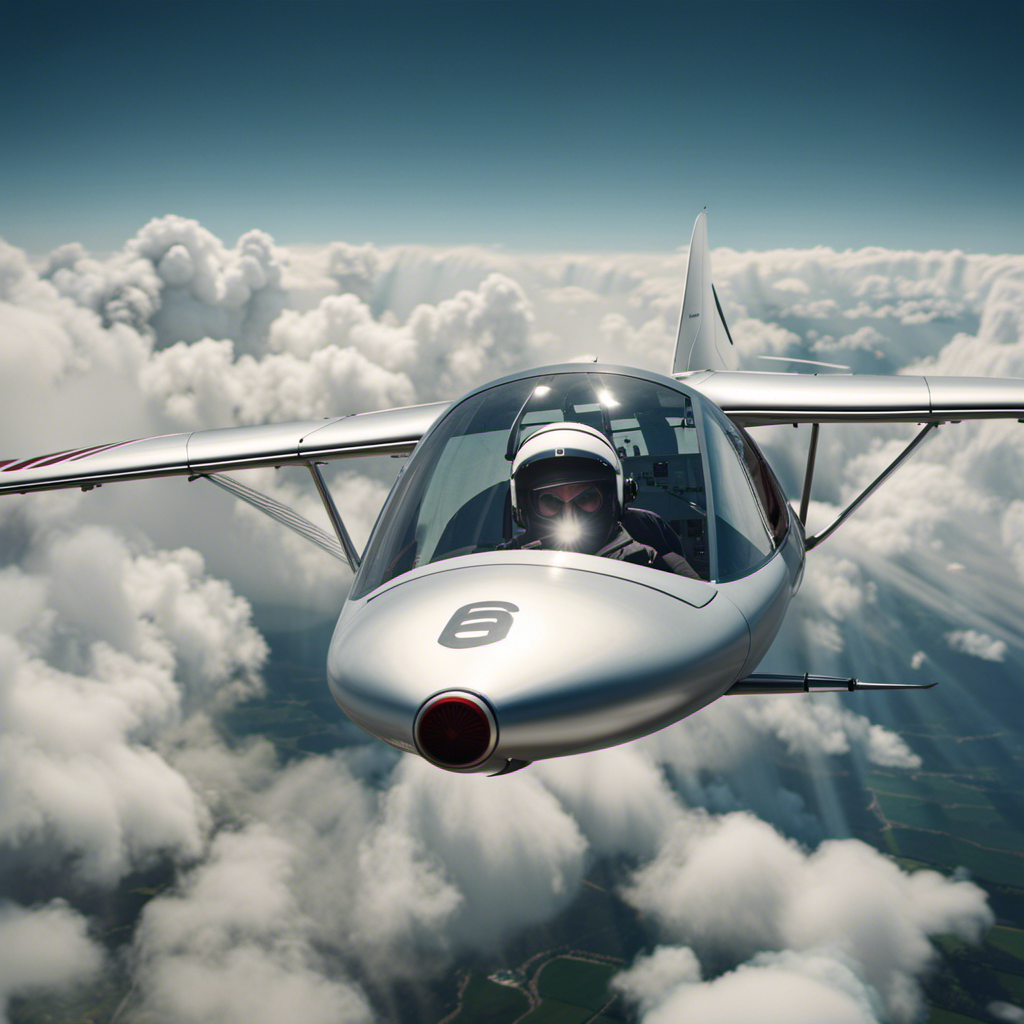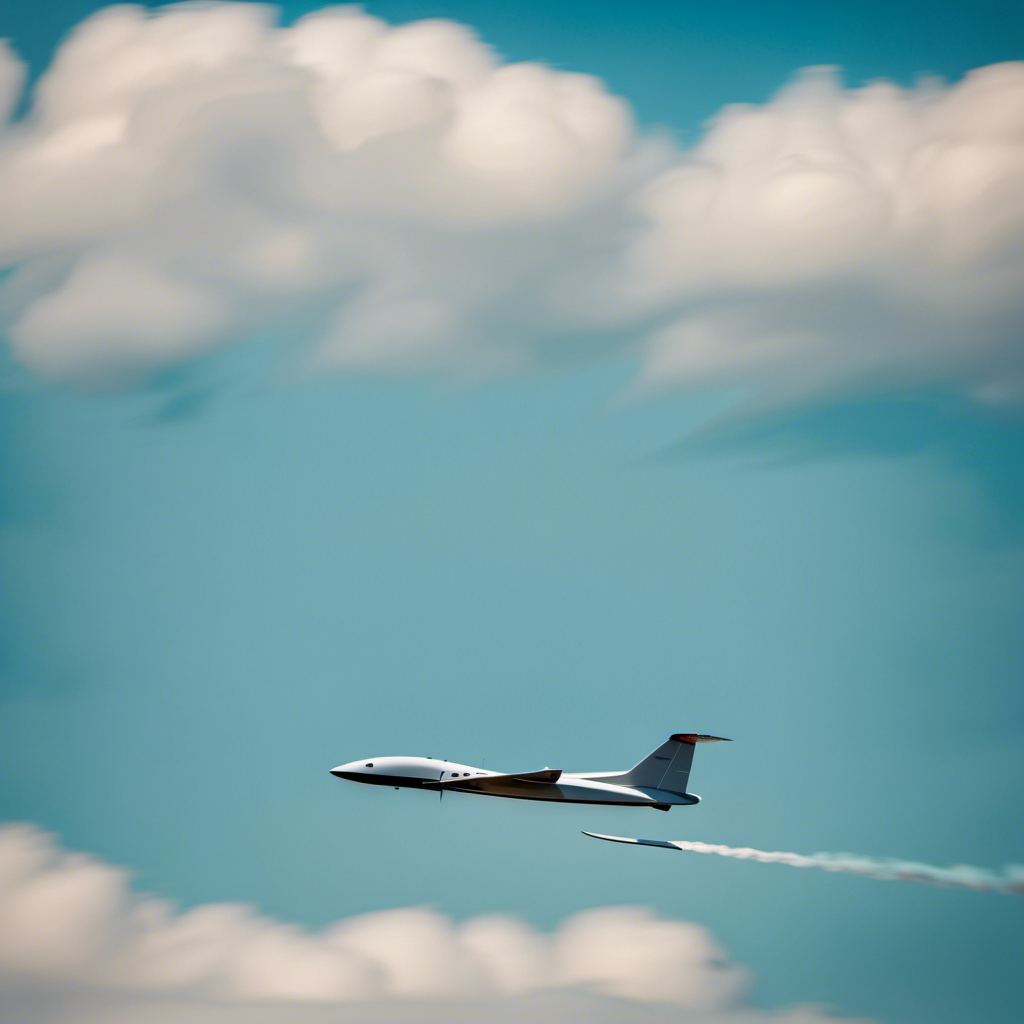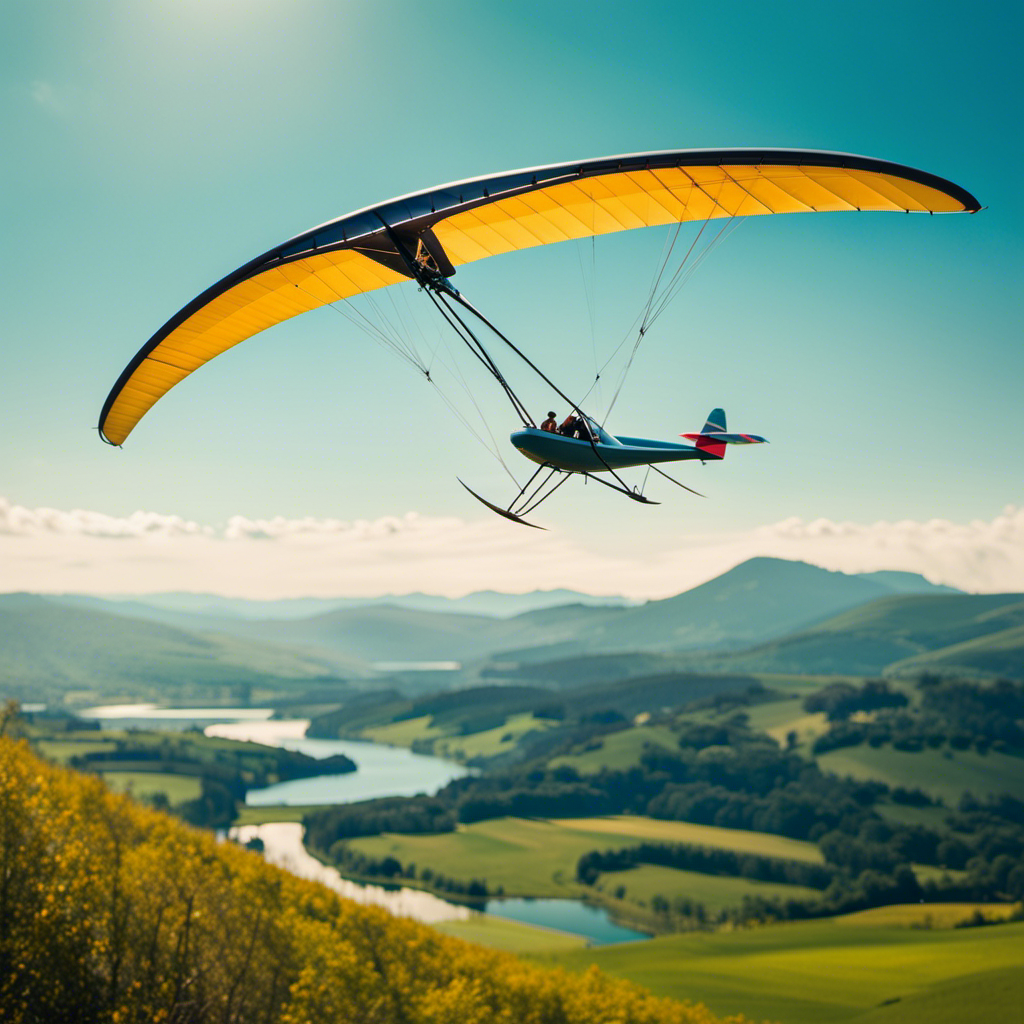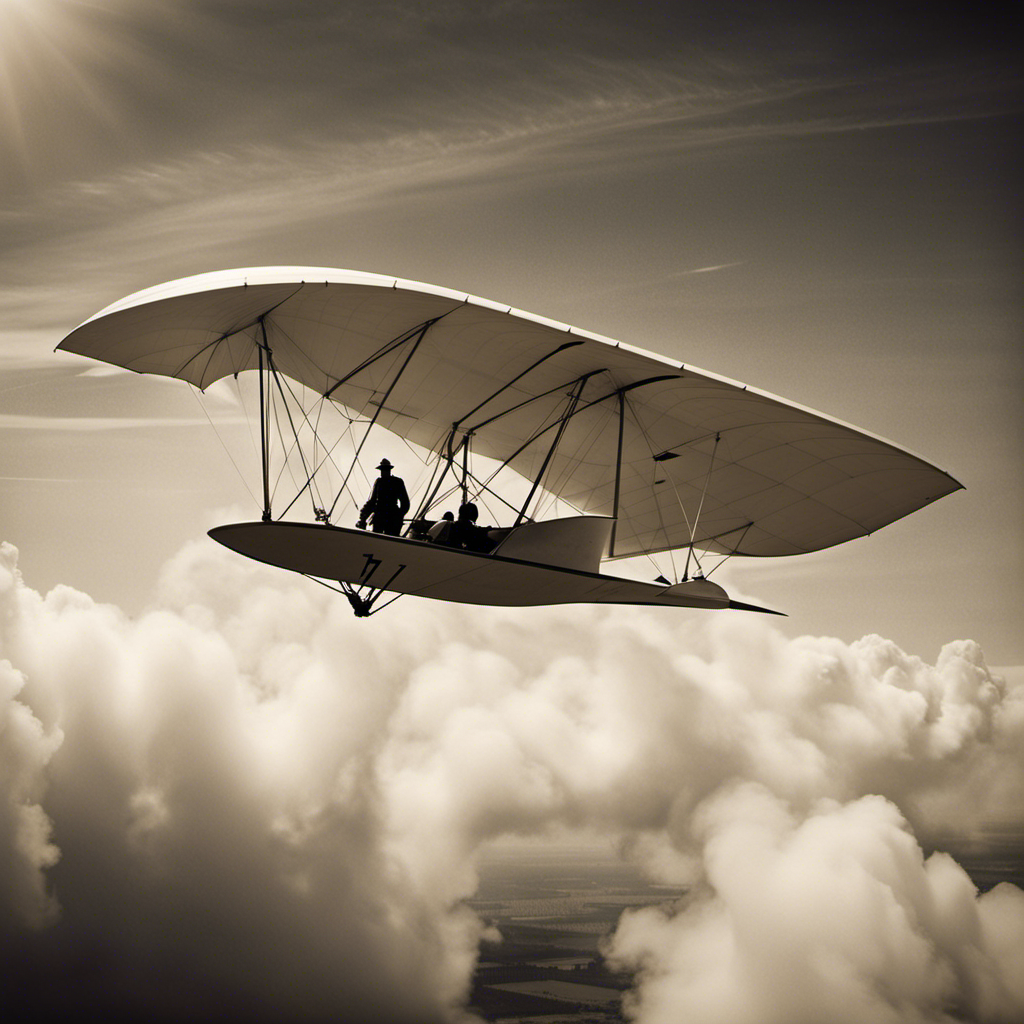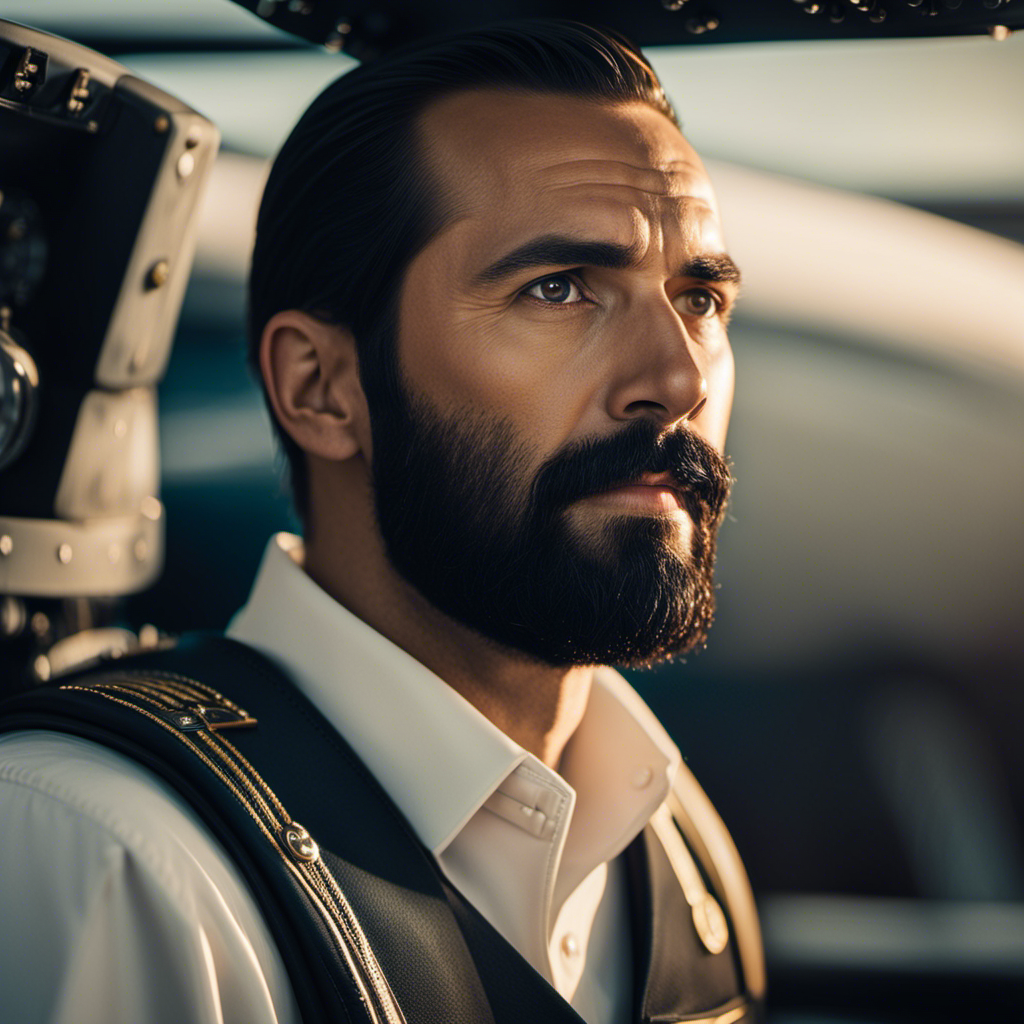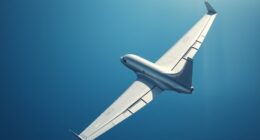As a seasoned glider pilot, I gracefully soar through the skies, navigating the winds and chasing the horizon. Despite the thrill and peace of flying, there is a practical concern that is often overlooked: how do we handle the issue of restroom breaks while in the air?
In this article, I will shed light on the challenges of peeing in the sky and share the ingenious solutions that glider pilots employ to ensure comfort and convenience. From strategic planning to ingenious devices, we’ve got it covered.
Key Takeaways
- Glider pilots often use relief tubes or bottles, strategic fluid intake and bathroom breaks, and clever alternatives to traditional restrooms for relieving themselves during flights.
- Planning and preparation for restroom needs involve finding a suitable bathroom upon arrival, communicating with fellow pilots, and seeking tips and tricks from experienced glider pilots.
- Comfort and hygiene are important factors during flights, as they contribute to the well-being and focus of pilots. Expert insights from glider pilots can provide valuable information in this regard.
- Community support and collaboration play a significant role in restroom management for glider pilots, including communication and sharing within the community, support and guidance from fellow pilots, and building a network of support and resources.
The Challenges of Peeing in the Sky
One of the challenges of peeing in the sky is finding a way to do it discreetly in a glider.
In flight, there are several challenges that make going to the bathroom a bit tricky. Gliders are small aircraft with limited space, and they do not come equipped with traditional bathroom facilities like commercial airplanes.
This means that glider pilots have to come up with alternative solutions to relieve themselves during long flights. Some pilots use a bottle or a specially designed funnel and tube system to direct their urine out of the glider. Others may opt for adult diapers or absorbent pads to manage their bodily functions.
However, it is important to plan ahead and empty the bladder before takeoff to minimize the need for in-flight bathroom alternatives. By doing so, pilots can focus on flying and enjoy their soaring experience without any discomfort or distractions.
Plan Ahead: Emptying the Bladder Before Takeoff
Make sure you empty your bladder before takeoff to avoid any discomfort during your glider flight. As a glider pilot myself, I know the importance of pre-flight rituals and emptying techniques to ensure a smooth and comfortable journey.
Emptying your bladder before takeoff is essential because once you’re up in the air, finding a bathroom can be quite challenging. It’s best to plan ahead and take care of this before getting in the cockpit. Many pilots have their own pre-flight routines, which often include a visit to the restroom. By doing this, you can focus on flying without any distractions or discomfort.
Speaking of which, let’s explore the portable urinal solution, a convenient option for pilots to address their bathroom needs during the flight.
The Portable Urinal Solution
Emptying your bladder before takeoff is crucial for a comfortable flight, and the portable urinal solution provides an easy and convenient option for pilots.
When nature calls during a flight, pilots can turn to portable urinal alternatives to overcome discomfort. These innovative devices are designed to be discreet, lightweight, and leak-proof, making them ideal for use in the cockpit.
Portable urinals are available in various sizes and shapes, allowing pilots to choose the option that best suits their needs. They are typically equipped with a secure seal to prevent any spills or odors, ensuring a hassle-free experience.
With portable urinals, pilots can alleviate any discomfort caused by a full bladder, allowing them to focus on flying. However, for those looking for a more long-term solution, the catheter option offers another alternative to consider.
The Catheter Option
When it comes to managing bladder control during flights, pilots may consider the catheter option as an alternative. While there are various catheter alternatives available, it is important to be aware of the potential health risks associated with their use.
Catheters are medical devices that are inserted into the bladder to drain urine. They can be uncomfortable and carry a risk of infection if not properly maintained. Additionally, prolonged use of catheters can lead to bladder and urinary tract problems. Therefore, it is essential to consult with a healthcare professional before considering this option.
However, if the use of a catheter is not suitable or preferred, there are other alternatives, such as the strategic use of diapers, that can ensure bladder control during flights.
The Strategic Use of Diapers
Consider using diapers strategically to maintain bladder control during flights. When it comes to long distance flights, strategic hydration is key. Here are three tips to help you manage your bladder during those lengthy journeys:
-
Plan your fluid intake: Before your flight, make sure to hydrate adequately, but be mindful of your bladder’s capacity. Avoid excessive consumption of diuretic beverages like coffee or alcohol.
-
Time your bathroom breaks: Take advantage of the pre-flight and in-flight bathroom opportunities. Visit the restroom before boarding and use it during layovers or in-flight meal services to minimize the need to go during crucial moments.
-
Choose the right diaper: Look for diapers that are discreet, comfortable, and absorbent. Opt for ones with odor control features to ensure a pleasant experience.
By following these strategies, you can maintain bladder control and focus on enjoying your flight.
Now, let’s transition to the next section, where we will discuss hydration management and the importance of balancing fluid intake.
Hydration Management: Balancing Fluid Intake
To maintain optimal hydration levels during your flight, it’s important to strike a balance between fluid intake and bladder control. Proper hydration is crucial for glider pilots to stay alert and focused during long flights. However, excessive fluid intake can lead to frequent bathroom breaks, hindering the overall experience. Dehydration symptoms, such as fatigue and decreased cognitive function, can also arise if fluid intake is not sufficient. Therefore, it is essential to find the right balance.
Drinking water in small, regular intervals can help avoid fluid retention and promote hydration without overwhelming the bladder. Additionally, consuming foods with high water content, like fruits and vegetables, can contribute to overall hydration levels. By managing fluid intake effectively, glider pilots can maintain optimal hydration without compromising bladder control. This allows them to focus on their flight and enjoy the journey to the fullest.
Now, let’s explore how the buddy system can help glider pilots overcome the challenges of using the bathroom during flights.
The Buddy System: Helping Each Other Out
Using the buddy system can assist glider pilots in managing bathroom breaks during flights. When nature calls, having a support network in place is crucial. Here are a few reasons why the buddy system is so important:
- Peace of mind: Knowing that someone has your back when you need to take a bathroom break can alleviate anxiety and allow you to focus on flying.
- Safety: In case of an emergency, having a buddy nearby can provide assistance and ensure a smooth transition of control.
- Efficiency: With a buddy, you can take turns monitoring the glider while the other uses the facilities, minimizing the time spent away from the controls.
- Camaraderie: Building strong relationships with fellow pilots through the buddy system creates a sense of belonging and support within the gliding community.
By utilizing the buddy system, glider pilots can enjoy their flights while knowing they have a reliable partner to assist them when nature calls.
Now, let’s discuss emergency measures for dealing with unexpected urges.
Emergency Measures: Dealing with Unexpected Urges
When nature unexpectedly calls, having a buddy nearby can provide essential assistance in managing urgent situations while flying. Dealing with sudden urges and managing bodily functions can be challenging for glider pilots, as they spend long hours in the air without access to conventional facilities.
Thankfully, there are strategies and tools that can help pilots navigate these situations with ease. One popular method is the use of relief tubes or bottles, which allow pilots to discreetly relieve themselves without interrupting their flight. These devices are designed to be easily accessible and can be used with minimal effort.
Additionally, pilots can plan their fluid intake and bathroom breaks strategically, ensuring that they minimize the need for urgent action mid-flight. By taking these measures, pilots can focus on their journey while maintaining their comfort and hygiene.
Transitioning into the subsequent section about the landing ritual, finding a suitable bathroom upon arrival becomes a priority.
The Landing Ritual: Finding a Suitable Bathroom Upon Arrival
After a successful landing, you’ll be relieved to find a suitable bathroom nearby. As a glider pilot, managing bladder control during long flights can be a challenge. Here are some tips for finding a discreet spot and ensuring comfort:
-
Plan ahead: Before your flight, identify airports or landing sites with restroom facilities nearby. This will save you time and stress upon landing.
-
Use privacy screens: Many glider clubs provide portable privacy screens that can be set up near the airfield. These screens offer a discreet spot for pilots to relieve themselves.
-
Carry a portable urinal: Investing in a portable urinal can be a lifesaver. These devices allow pilots to discreetly empty their bladders without leaving the cockpit.
-
Communicate with fellow pilots: Experienced glider pilots often have valuable advice on nearby restrooms or discreet spots. Reach out to them for recommendations.
Now that we’ve covered the importance of finding a suitable bathroom, let’s dive into some expert tips and tricks from experienced glider pilots.
Tips and Tricks from Experienced Glider Pilots
As we delve deeper into the world of glider pilots and their bathroom predicaments, it’s important to remember that this community is one that thrives on sharing experiences and knowledge. With that in mind, experienced glider pilots have come up with some tips and tricks to make those restroom alternatives a little more manageable.
Within the glider pilot community, there is a wealth of information on how to handle the need to relieve oneself while soaring through the skies. Pilots often share their personal experiences and offer advice on what works best for them. From using portable urination devices to adopting a strategic hydration schedule, these insights can be invaluable for those new to the gliding scene.
Additionally, pilots have discovered clever alternatives to traditional restrooms. Some have found success in using absorbent materials or specially designed clothing that can handle liquids discreetly. Others have even modified their glider’s cockpit to include a portable toilet.
Frequently Asked Questions
Can glider pilots hold their bladder for the entire duration of a flight?
Glider pilots have good bladder control and manage hydration to minimize the need to urinate during flights. By monitoring fluid intake and timing restroom breaks before flights, we can stay focused and comfortable in the cockpit.
Are there any health risks associated with holding in urine during a glider flight?
Holding urine during a glider flight can pose health risks. It can lead to urinary tract infections, kidney damage, and discomfort. It’s important to relieve oneself to maintain proper bladder function and avoid potential complications.
How do glider pilots manage their fluid intake during long flights?
During long glider flights, I manage my fluid intake by strategically hydrating before and after the flight, as well as drinking small amounts of water throughout. Fluid management and hydration strategies are essential to maintain focus and prevent dehydration.
Are there any regulations or guidelines regarding peeing during a glider flight?
Regulations and guidelines exist for glider flights which include considerations for bladder control and health risks. It is important for pilots to manage fluid intake and plan accordingly to ensure a safe and comfortable flight.
Are there any specific techniques or strategies that glider pilots use to minimize the need to pee during a flight?
As a glider pilot, I employ various strategies and techniques to minimize the need to pee during a flight. These include managing fluid intake before flying, using proper hydration techniques, and planning flights with shorter durations.
Conclusion
In conclusion, the art of peeing in the sky is a challenge that glider pilots face with finesse and resourcefulness.
From strategic planning to creative solutions, these aviators have mastered the art of relieving themselves mid-flight.
Whether it’s using portable urinals, catheters, or even diapers, these pilots are willing to go above and beyond to answer nature’s call.
So next time you find yourself soaring through the clouds, remember the tips and tricks from these experienced glider pilots.
Happy flying, and may your bladder always be empty!
With a heart that soars as high as the skies, Aria, affectionately known as “Skylark,” is the driving force behind Soaring Skyways. Her journey into the gliding world began as a young dreamer gazing up at the soaring birds, yearning to experience the weightlessness and freedom they embodied. With years of experience both in the cockpit and behind the scenes, Aria’s commitment to the gliding community is unwavering.
